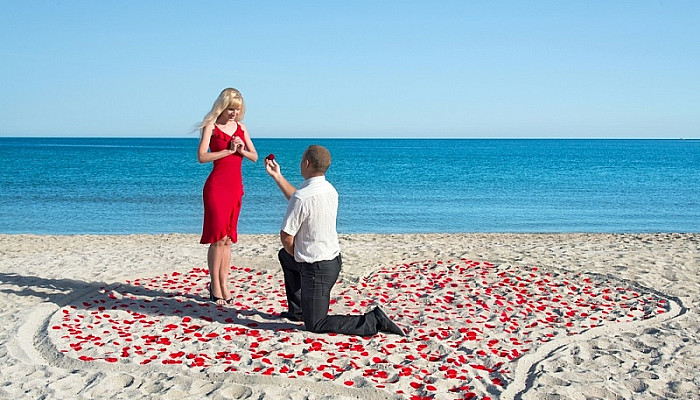Same-Sex Traditions

Same-sex marriage is defined as two people of the same sex who live together as a family. Other terms include” gay marriage “,” gender-neutral marriage “, ” equal marriage “, ” lesbian marriage “, ” homosexual marriage “, and ” same-gender marriage “.
In the late 1990s and early 2000s, opposing efforts to legalize or ban same-sex civil marriage made it a topic of debate all over the world. In 2001, the Netherlands were the first country to allow same-sex marriage. At present, same-sex marriages are also recognized in Belgium, Canada, South Africa, Spain, and Massachusetts of the United States (for same-sex marriages performed within that state under its laws). Israel ’s High Court of Justice ruled to recognize same-sex marriages performed in other countries, although it is still illegal to perform them within the country and a bill has been raised in Knesset to rescind the High Court’s ruling.
Debates over Terminology
Many proponents of same-sex marriage use the term “equal marriage” ; the term “equal marriage” has also long been used by feminists to describe any marriage, regardless of the sex of the partners, in which the partners have equal status within the marriage. Some argue that the correct term is simply “marriage” since that is how opposite-sex marriage is presented. Opponents argue that equating same-sex and opposite-sex marriage changes the meaning of marriage and its traditions. Some opponents use the term “homosexual marriage”, and surveys have suggested that the word “homosexual” is more stigmatizing than the word “gay”. Some publications that oppose same-sex marriage put the word “marriage” in when referring to it. Notable publications that practice this are and LifeSite . , a writer for the American conservative-based media watchdog group, agrees with this method arguing that “marriage” is a word that same-sex couples merely want to apply to themselves, but have no legal ability to do so in most states. Same-sex marriage supporters argue that it is editorializing and implying inferiority, and point out that the quotes are even used when referring to same-sex marriages in locations where it is legal.
Some have suggested reserving the word “marriage” for religious contexts, and in civil and legal contexts using a uniform concept of civil unions . Harvard Law professor Alan Dershowitz , for instance, wrote that such an arrangement would “strengthen the wall of separation between church and state by placing a sacred institution entirely in the hands of the church while placing a secular institution under state control”. Conservative critics like National Review’s Jennifer Morse contend that the conflation of marriage with contractual agreements is itself a threat to marriage that “has undermined more heterosexual marriages than anything, with the possible exception of adultery”.
The terms “gay marriage” and “straight marriage” are potentially inaccurate to the extent that they imply that the spouses are of a certain sexual orientation . A spouse in a same-sex marriage may be bisexual and not gay, and a spouse in an opposite-gender marriage may be straight, bisexual, or gay. Sexual orientation has rarely been a legal or religious qualification for marriage (a gay man could still marry a woman).
Current Status of Same-Sex Marriage
Full marriage is presently available to same-sex couples in five countries. However, some of the rights of marriage are granted elsewhere through civil unions or by private employers.
Recognition of Civil Unions
Civil unions, domestic partnerships or registered partnerships offer varying amounts of the benefits of marriage and are available in: Andorra , Croatia , Czech Republic , Denmark , Finland , France , Germany , Iceland , Israel, Luxembourg, New Zealand, Norway, Portugal, Slovenia, Sweden, Switzerland and the United Kingdom. They are also available in parts of Argentina, Brazil, Italy, Mexico, all Australian states and territories, and in the United States are California, Connecticut, Hawaii, Maine, New Jersey, and Vermont, and the U.S. District of Columbia (Washington, DC). The first same-sex union in modern history with government recognition was obtained in Denmark in 1989. Scandinavian registered partnership is nearly equal to marriage, including legal adoption rights in Sweden, and since June, also in Iceland. However these partnerships are written separately from marriage in the existing laws, and are thus not called marriage except in daily speech. In some countries with legal recognition the actual benefits are minimal. Many people consider civil unions, even those which grant equal rights, inadequate, as they create a separate status, and think they should be replaced by gender-neutral marriage.
International Organizations and Same-Sex Recognition
The terms of employment of the staff of international organizations (not businesses) are not, in most cases, governed by the laws of the country in which their offices are located. Agreements with the host country safeguard these organizations’ impartiality with regard to the host and member countries. Hiring and firing practices, working hours and environment, holiday time, pension plans, health insurance and life insurance, salaries, expatriation benefits and general conditions of employment are managed according to rules and regulations proper to each organization. The independence of these organizations gives them the freedom to implement human resource policies which are even contrary to the laws of their host and member countries. A person who is otherwise eligible for employment in Belgium may not become an employee of NATO unless he or she is a citizen of a NATO member state. The World Health Organization has recently banned the recruitment of cigarette smokers. Agencies of the United Nations coordinate some human resource policies amongst themselves.
Despite their relative independence, few organizations currently recognize same-sex partnerships without condition. The Organization for Economic Co-operation and Development (OECD) and the agencies of the United Nations voluntarily discriminate between opposite-sex marriages and same-sex marriages, as well as discriminating between employees on the basis of nationality. These organizations recognize same-sex marriages only if the country of citizenship of the employees in question recognizes the marriage. In some cases, these organizations do offer a limited selection of the benefits normally provided to opposite-sex married couples to de facto partners or domestic partners of their staff, but even individuals who have entered into an opposite-sex civil union in their home country are not guaranteed full recognition of this union in all organizations. However, the World Bank does recognize domestic partners.
Same-Sex Marriage and Civil Union Statistics
In the United Kingdom, the government is reported to have anticipated demand for same sex civil partnerships as being around 11,000 to 22,000 by 2010 . However as at December 2006 some 15,657 such partnerships had been registered in around 9 months.
Same-Sex Marriage and the Transgendered
If defined genetically, both transsexuals and intersexed individuals would be prohibited from marrying partners of the “opposite” sex and therefore from heterosexual marriage. Just as recent same-sex marriages have been quickly overturned as null and void, so too could extant, long term marriages. More than one in one hundred newborns are to some degree physically aberrant from their genetic sex , with most of them undergoing some degree of surgical alteration. In the United Kingdom, recent legislation allows transsexual persons to be officially recognized in their new gender, but this has the effect of annulling any previous marriage. However the couple will now be able to register a civil partnership, to come into force immediately on the dissolution of their marriage.



